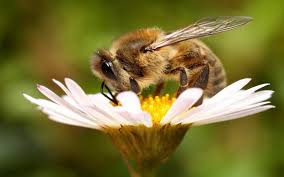| | Why is Proven Winners and others concerned about bees and other pollinators?
Beekeepers in Europe and North American have faced some difficult problems in the last 10 years, including a parasite of bees called the Varroa mite and Colony Collapse Disorder—a disorder in which bees seem to mysteriously disappear over a short period of time. Initially, the decline in health of bee colonies in general, and specifically Colony Collapse Disorder, was suspected to be associated with the use of insecticides on agricultural crops, especially in Europe. Extensive research on Colony Collapse Disorder suggests that the most important causes of this syndrome are a combination of several bee diseases with other stresses. At this time insecticide use is NOT considered to be a direct cause of Colony Collapse Disorder. Are flowers, shrubs and trees purchased at a garden center safe for bees and other pollinators?There does not appear to be any reason to think that flowers, trees and shrubs purchased in garden centers have any connection to the decline of managed honey bee colonies. What are neonicotinoid insecticides?Neonicotinoids are a group of insecticides with a chemical structure that is similar to nicotine. They have been used extensively in agriculture and in yard and garden products. Among many important uses, neonicotinoids are the primary insecticides being used to contain Asian longhorned beetles and to protect trees from hemlock wooly adelgid, which have the potential to damage or kill most of the maple and hemlock trees in North America. The five neonicotinoid active ingredients that are in some lawn and garden products are: acetamiprid, clothianidin, dinotefuran, imidacloprid and thiamethoxam. - They are more selective (e.g. they have greater toxicity to insects than with mammals), and are less harmful than most of the older classes of insecticides. The most widely used neonicotinoid insecticide, imidacloprid, is less toxic to people than caffeine and about twice as toxic as ibuprofen.
- They are usually systemic. They can be absorbed by the roots and move through the entire plant.
What can I do to protect bees and other pollinators in my yard and garden?People that would like to protect pollinators in the yard and garden should avoid spraying open flowers with any insecticide with the exception of B.t. (Bacillus thuringiensis). Horticultural oil and insecticidal soap can also be used on cool mornings (< 50° F), after sunset, or at any time that bees are not present because the spray residue is not toxic to bees. Soap and oil can cause some plant injury, especially to open flowers. Plants that need to be protected against damaging insects by using a conventional insecticide should be sprayed after petal-fall (after the plant is done blooming), or after removing the flowers. David Smitley, Michigan State UniversityDownload PDF Bees In the NewsUSDA study concludes neonics not driving bee deaths—As White House set to announce ‘bee revival’ plan’ (Genetic Literacy Project) |



